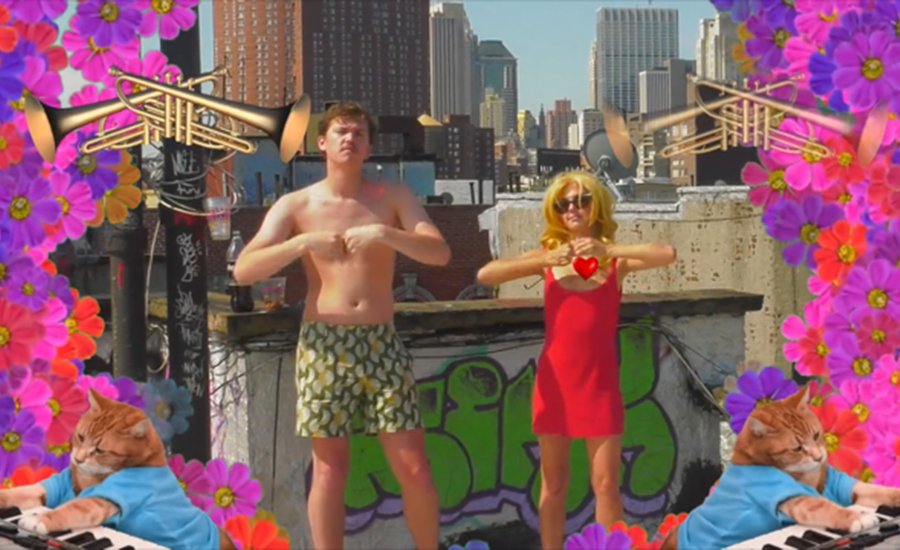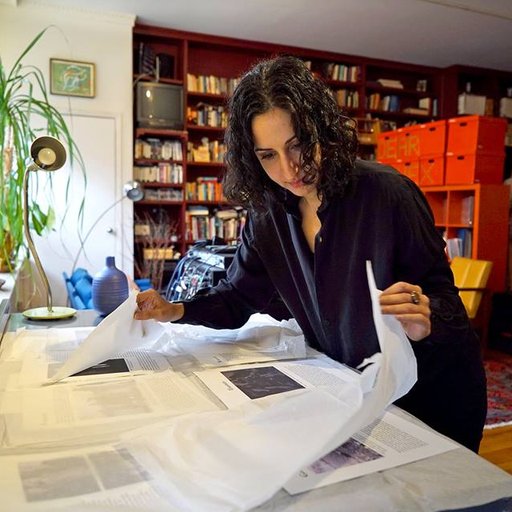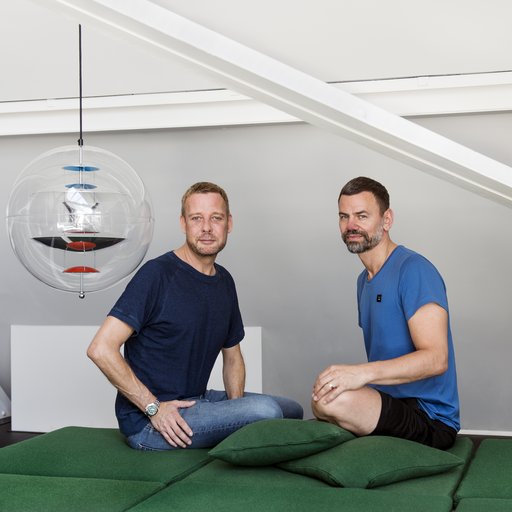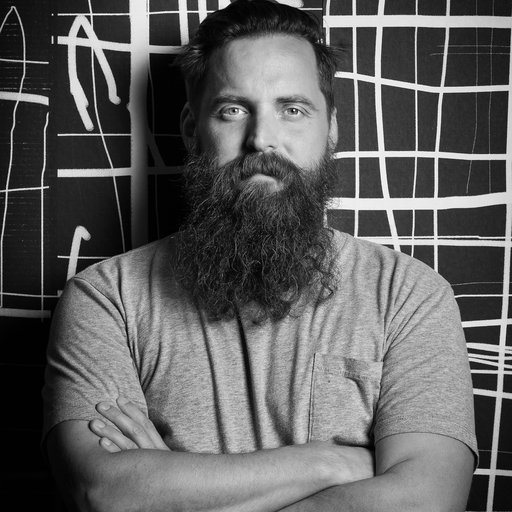It’s difficult to speak about Keren Cytter ’s oeuvre holistically, only because she's such a prolific artist that it’s almost impossible to view it all. The Israeli-born, New York-based filmmaker and writer has produced over 60 videos ; published seven books that include novels, poetry, and screenplays; and is also the founder of dance company Dance International Europe Now (aka D.I.E. Now.)... and she's hasn't even turned 40.
Like Martin Heidegger ’s famous hammer, which only reveals its true nature once it breaks or otherwise fails to function, Cytter’s films employ cliché to set up familiar reference points only to break them down—with poorly dubbed dialogue, fragmented or repetitious story-lines, and subtitles that address the viewer, for example—and reveal the cinematic conventions that are normally invisible to us.
Cytter’s bag of tricks is chock-full of immediately identifiable tropes, from overly dramatized Hollywood mobster and thriller genre films, that have been delivered so adeptly by directors like Francis Ford Coppola , Alfred Hitchcock , and Quentin Tarantino . But Cytter’s use of these devices don’t quite fit—instead, they feel willfully clumsy and absurd. The 2014 video Rose Garden ends as a young boy is shot with a rifle after stealing a disco ball from the kind of timeless Midwestern dive bar you might expect to see in No Country for Old Men . The boy, refereed to by his bartending parents as both “Scott” and “Stock,” had shot his mother a few seconds before for no discernible reason, and the two murders (of which there are four total in the nine-minute-long film) seemed to bear no relation to one another.
Equally disorienting, the film Four Seasons (2009) starts with a shot of blood dripping onto white tile as a wounded man sits in a bathtub with snow falling around him. After the opening credit sequence, a woman enters the bathroom to ask the man to turn his music down, which she can hear from the apartment next door. The man yells twice, “Stella!” (presumably in reference to Marlon Brando 's oft-parodied line from A Streetcar Named Desire ) and the woman replies, “My name is Lucy, man,” before conversation unfolds casually as if nothing is out of the ordinary. Cytter uses clichés like cinematic readymades, using them to piece together disjointed, fragmented, often absurdist narratives. As a viewer, it sometimes feels as if, through her exaggerated use of cinematic conventions, Cytter is reminding us that we're watching a film.
Humor, some theorists believe, is experienced when a person’s worldview is turned on its head for a split-second, and then revealed to be only temporary, a joke. Cytter’s films are funny—funny in a smart, dry way that challenges the viewer’s relationship to film. In Cytter’s Video Art Manual , the artist illustrates, quite literally, the filmic conventions and cinematic clichés that she subverts in her work.
The video begins with a young man in a suit sitting at a desk addressing the camera: “In this informal presentation I will try to unfold the great mysteries of new medias and reveal the utopian anxieties of the common man.” By then, we can already assume that this won’t be a straightforward educational film by the way the audio inexplicably changes volume mid-sentence, at times becoming unsynchronized with the actor’s lips. This scene segues into the next with a countdown that only goes from “five…” to “four…,” leading into a montage of news footage that introduces a second narrative, an impending cataclysmic solar flare event, that continues to weave in and out of the rest of the film.
Characters preparing for this imminent environmental catastrophe shift between inhabiting their roles as fictional characters and acting as actors who are playing their characters’ parts. We see one actor selling himself during a casting call, though his rehearsed speech makes it obvious that this too is an act. “You’ve got to take me, I’m multitalented. I speak three languages, sprechen sie Deutsch, y hablo Español,” the actor says before spouting off generic textbook Spanish phrases, while a superimposed subtitle reads, “The performers aren’t as concerned with their acting skills as they are representing familiar characters and situations. Subtitles help to distract the viewer from bad acting and visual mistakes.” Cytter's films may follow some sort of narrative thrust, but the meat of the work's content can be found on the bones—the form, the structure that is conventionally out of site but is foregrounded for Cytter. We as viewers are as aware of the off-screen editor, the director, the script writer (who are all, of course, Cytter), as we are the actors onscreen.
For an artist making self-reflexive medium-specific work, Cytter sure does work in a number of media. In 2008, Cytter expanded into the world of theater, founding her dance company, D.I.E. Now. Their first production, The True Story of John Webber and His Endless Struggle With the Table of Content was as much Samuel Beckett as it was "Disney on Ice." Combining dance, video, music (composed by Cytter herself), and spoken text, the artist worked with non-professional performers—a trademark Cytter carried over from her video work. The production was performed at the T ate Modern ’s Turbine Hall in London in 2009.
Cytter's most recent work is yet another departure from her cinematic mainstays. Terrorist of Love , commissioned by Artspace and Daata Editions (and available as a free download here ), is a music video, and uses imagery native to the Internet—two firsts for the artist. Using a fixed 4K camera, Cytter shot the video in one take, before devising an unconventional video format in post-production solely using key framing, meme-like imagery, and an original soundtrack—an unprecedented approach to video-making in any genre. Here, Artspace’s Loney Abrams talks to the artist about making Terrorist of Love , her self-imposed rules of production, addictive Instagram habits, and the artist’s unfulfilled desire to make her audience feel sad.
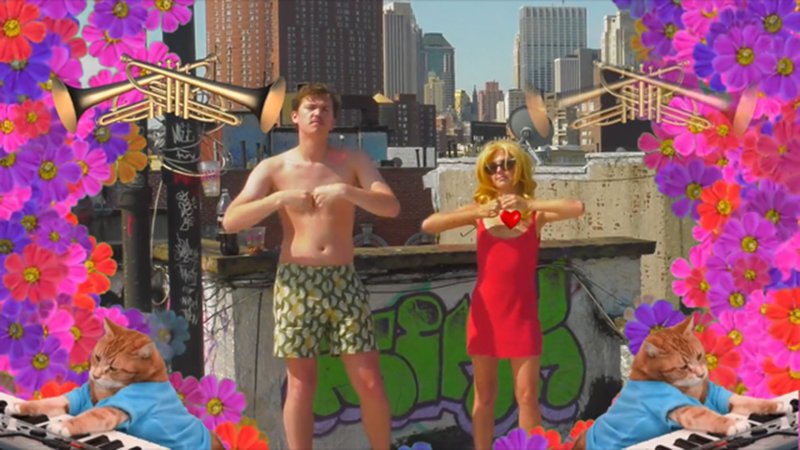
Terrorist of Love seems to be the first video you’ve made that is soundtrack driven. How did the idea come about?
I hadn’t made anything like this before. I was in Israel and I was visiting my friend who is a musician, and I asked him for songs. He had this one and I decided to work on it. Then I said, “Okay, we can replace him with performers.” So that’s what we did!
Would you consider it a music video?
I’d say it’s a music video, yeah. [Laughs.] I made up a structure to follow: I will use a very good camera and will shoot two performers on a roof, lip-syncing and casually dancing to the song, and after that, I will zoom into the frame and let the camera move to the shift of the music, on different details of the shot.
What are the lyrics?
Terrorist of Love / Turkish Delight / Search me / Search me. I think it’s a love song, using political words. I made up the choreography.
Have you used meme-type imagery before or is this new too?
On my Instagram yes, but no, never in a video. It doesn’t ever fit with a plot so I could never do it.
Can you talk about your Instagram?
I’m obsessed. I was in rehab for three weeks!
You’re addicted to Instagram?
Yeah, my friend told me I should stop. I should stop. I think I’m really neurotic so that’s why I’m doing it. Instead of biting my nails I’m posting on Instagram. I got addicted, and I’m trying to post less—that’s why I’m erasing posts all the time. Also, I decide to always have less than 1,000.
1,000 posts?
Images in in general, yeah. Because, to me, it looks vulgar if I have a lot. I also don’t follow people who post too much. That’s why I don’t like myself so much for doing it. I’m much less exclusive when I post a lot.
Sometimes an artist’s work becomes devalued when the artist overproduces. The demand can’t keep up with supply. You talk about your Instagram as if it’s going to lose value if you over-post!
No, it's not that—I just don’t like people that post a lot. It means they have no life, and as you can see, I have tons of life. [Laughter.] No, I don’t know, I just post images all the time because whenever I have an empty moment I start to correct images and post instead of reading or doing something constructive. Like I told Fabian [an actor in Cytter’s upcoming theater performance], “Let’s go outside and bring the book,” so we brought the book and then I just sat outside posting images.
I’ve been following your Instagram for a while, and I’ve notice you use a lot of hashtags, which become poetic in a sense because they really aren’t useful as hashtags. It seems like sometimes the images on Instagram are secondary to your comments and hashtags.
It’s a lack of confidence sometimes. I think that my images are not good enough so I try to pump them up with the right hashtags. I want to express myself but I think sometimes images are not expressing myself. And sometimes I just don’t have good images! With all the life I have, I don’t have juicy, juicy images! [Laughs.]
In your films, what is more important, the images or the language?
I think the images, generally. The images are not connected very well, so I need lots of language to pull them together. Actually, there is one thing that's funny with Terrorist of Love . Even if I use a good-quality camera it always comes out really bad, and for this video I used a 4K. So it’s a 4K image, but because you get into the frame, the quality comes out worse than any normal camera. So I said, “Oh, I’m keeping my line of bad images!”
In the first 10 seconds of the video, I thought you were zooming in and out on a still photograph—but then I began to realize that parts of the image were animated, and it was actually a video.
Yeah, well the camera didn’t move the whole time. That was my initial plan: to do everything like voyeurism in the frame.
Yeah, it’s amazing how dynamic you were able to make it without moving the camera. There’s so much going on in the video even though there was really very little activity on set.
Yeah I think people will really enjoy watching it… I think. I like it a lot. It’s going to be cute. It’s like, all Disney.
The scenery is so New York. It’s shot on a rooftop covered in graffiti, overlooking the Manhattan skyline. This kind of scenery is kind of cliché for a certain type of music video—but Terrorist of Love is so not the type of video you’d imagine in this setting.
[Laughs.] Yeah. At first I imagined filming it with the musician who wrote the song at his place in Israel. When we used to work together we got along very well, but when I left Israel 13 years ago, we became a bit like my characters and started drifting apart. I realized I’d be happier to do it not with him, but just to give him the video in the end. So that’s why I imposed everything I planned to do in Israel just on New York. To get into the frame with the sound of the music as the goal.
Your films are really transparent about the medium. So, sure, they’re about some characters, and there’s a storyline, but they’re also about people who are acting in front of a camera, and people who are reading scripts, and people who are making a film—in a way that makes the viewer very aware that they are watching a video. And in more recent years, you’ve also started doing live performances and theater. So I’m wondering how you carry the meta-narrative onto the stage?
Actually it’s quite easy. Now I’m doing a script for a theater we’re going to do. Suzy starts saying, “You might know me from other performances as in—just kidding, I never get the roll.” So you just need to say it and it’s there. It’s just a matter of marking it. You always know that it’s an act. I didn’t invent it, you know so, it’s quite easy— you just play all the time between those worlds.
Audiences obviously have very different expectations when they’re watching film or they’re watching theater. I imagine with film you’re able, through editing, to better direct how your audiences experience the film. You probably can’t do this as easily with theater. Is your audience on your mind when you’re making your work?
I see myself as my audience. When I see a theater play, I’m judging it. So the first thing I had to do when I wrote the text for Suzy is pull one over on the audience, to shock them so that after they stop judging and get into the plot. I like to have a plot but also I like the audience not to forget that they’re watching a play, or watching a film. I hate to waste my time watching other people’s stories. I like when things are not clear to me. I also like that I can feel things—I like to get sad. But I’m not so good at making sad things, I’m better at humor. People are more attached to things if they are feeling sad, so I try to make sad things now, but it’s really embarrassing me.
So your motivation to make sad stories comes not from necessarily having sad stories to tell but wanting people to feel sad?
Yes, exactly. It’d be great if they can't understand what the story was but they say, “It was so sad.” That would be great because it means I really manipulated them.
In Video Art Manual, the format you’ve set up is similar to a how-to video and then woven into that is this kind of absurdist narrative about an impending apocalyptic solar flare event.
Ah yes.
And then on top of that you’re also bringing the viewer into it by commenting on their experience, and so I’m wondering how you differentiate, or if you differentiate, between narrative and content?
Well for me the content is actually the structure of things, not the narrative itself. The narrative is just an excuse for the audience to keep on following. With the solar flame, I was a bit consumed by it. I read it and I was really worried for my job because they said there will be an electricity power cut, and I said “How can I make videos?” and I said “Oh, I can make drawings.”
I mentioned several times in the video the solar flame and the consequences because that will make the audience keep on watching it, and, for me, that narrative is more interesting than the history of video art. So for me the structures and the frames are much more interesting than the narrative, and the narrative is just for the audience. And it’s also a way for the images to come together so I can smash different things and it will make sense for you because there is some kind of narrative—my excuse for it.
So making a narrative is just an excuse—
To create structures, yeah.
So the narrative gives you an excuse to make a formal film. You also use many different languages in your films and I wonder if that’s an excuse to use subtitles and text as another play on form?
Yeah. Right. Also, you see an Italian movie and it’s not acted well or you don’t get the language so you just say, “Oh, it’s the Italian”—that’s what I think, “Oh, it’s the Italian, Italians are like that.” But when I was in Italy I made a movie there and I asked one of the girls to act like Anna Magnani and she knew exactly what I meant and I realized she was acting a certain way—it’s not like the way Italians act normally, so I was right.
What’s your writing process like? Would you walk us through how you get from point A to B?
It’s depressing actually, I just don’t leave the house. That’s why I’m posting a lot. I have no life so because I need to write all the time. I need to find an idea and until I have an idea I cannot write. It’s better not to write until I have the idea, and then when I start writing I write halfway through and I think it’s fine, and then I realize I cannot continue because the idea is not finished, it doesn’t have enough rules. I need to have more rules and more framing.
What do you mean by rules?
For example I made a Russian movie in Russia with naked people—lots of penises. It’s a very classic movie—the camera doesn’t move. I needed some rules... nine shots with no zoom in and no panning; three acts with three shots in each act. I was in Russia and I was googling “crazy Russians” and I found a crazy image of Russians taping up their apartment with plastic and then flooding it like a swimming pool. My backyard is really fitting for that, actually. That was in my head, that I wanted to turn my backyard into a swimming pool. So I decided to make a movie because of this image.
Because it was with Russians I could do it hardcore, and there were lots of penises and porn and stuff like that. I thought also, because it’s Russians, it’s a bit political because of the power shift I think now in the world. So there were three guys and one girl because I’m concerned about women's rights, and then it begins actually representing minorities in general. At the end of each act, one of them dies, but keeps on living in the next act. So that was part of the rules.
Another rule was that it needed to be in Russian, and the camera doesn’t move so they need some time to lower themselves to fit into the frame. Maybe there were more things that I forgot. But I need lots of rules just in order to write.
I’m thinking about this device you’re using in Terrorist of Love where you don’t move the camera. The video is static with no cuts. It seems super contemporary, actually, in that a lot of video we’re seeing are coming directly from people’s iPhones. For example, on Facebook Live or Periscope, it's live-streamed and you can’t make edits. We’re probably getting used to seeing more of these really long takes.
Ah, yeah, that’s cool. Actually in cinema, that’s what counts as a good thing—if the take is long. And subconsciously I think it somehow stays with you. At least it does with me in The Passenger with Jack Nicholson. The last shot is 360 degrees uncut. I like it.
Do you have anything coming up that you’re excited about?
Excited? [Laughs.]
[Laughs.] Do you have anything coming up that you are excited about or not excited about?
My book [ A-Z Life Coaching] will come out in two weeks. The book's cover designer is the designer of the poster from The Lobster, the movie. I met him once and I found his email and he agreed to do it, so it’s really cool. I like it; he invented it.
Also there will be this theater thing we are going to do. We’re going to shoot one part with Colby Keller, who's a gay porn star, and we are going to show it in the Stedelijk Museum in Amsterdam in November. I don’t know if I’m excited about this, or I’m afraid. Woah, yeah, I’m not excited yet.












